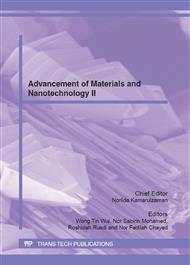p.195
p.199
p.204
p.209
p.214
p.223
p.229
p.235
p.240
Influence of Carbon Additives on Cathode Materials, LiCoO2 and LiMn2O4
Abstract:
Carbon additives are very important components of cathodes in Li-ion batteries. This is because carbon is an electronic conductor whereas cathode materials are ionic conductors. Without the presence of carbon, the electrons will not be able to flow and there will be space charge built-up in the materials. Carbon therefore facilitates the conductivity of charged species in the cathode materials and help to disperse the negative charge accumulation which may otherwise impede Li-ion diffusion within the cathodes. In this work, two types of carbon, namely, activated carbon (micron sized) and Denka Black (nano sized) were used in conjunction with the cathode materials LiCoO2 and LiMn2O4. The amounts of cathode materials were kept constant while the amounts of carbon additives were varied. Galvanostatic charge-discharge was done over a voltage range of 4.2 V to 3.2 V. Results showed that Denka Black gives improved performance for both cathode material. This is believed to be due to the effect of nano sized particles of Denka Black.
Info:
Periodical:
Pages:
214-219
Citation:
Online since:
July 2012
Keywords:
Price:
Сopyright:
© 2012 Trans Tech Publications Ltd. All Rights Reserved
Share:
Citation:


